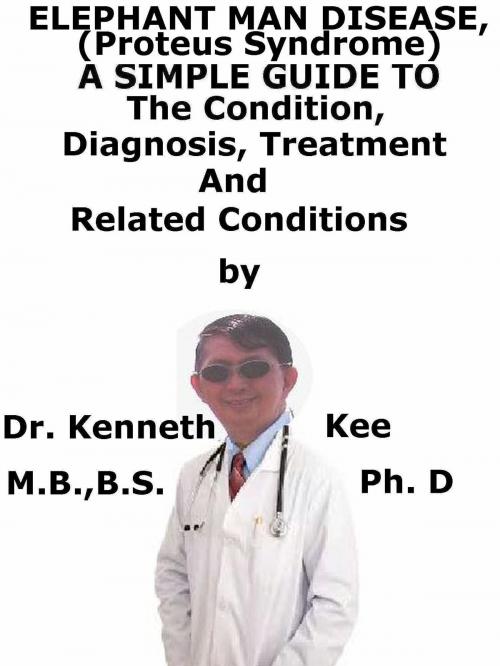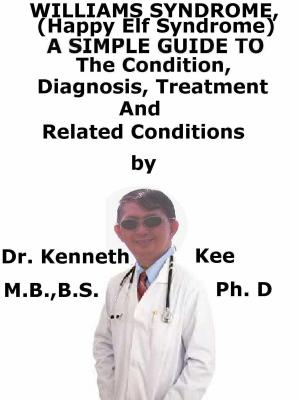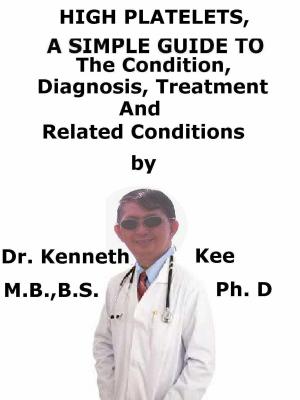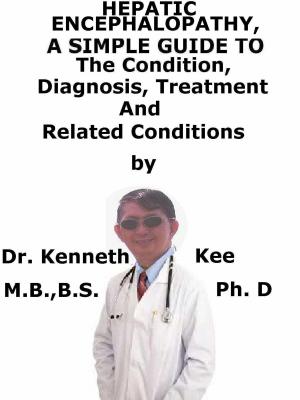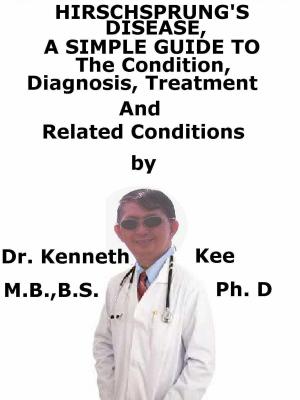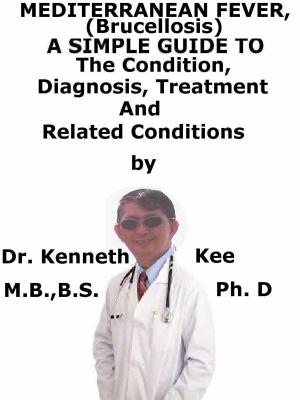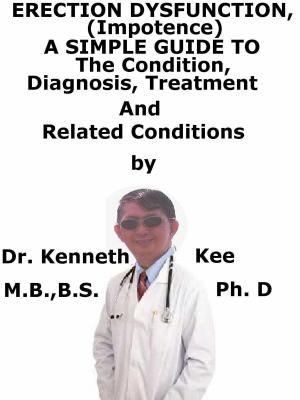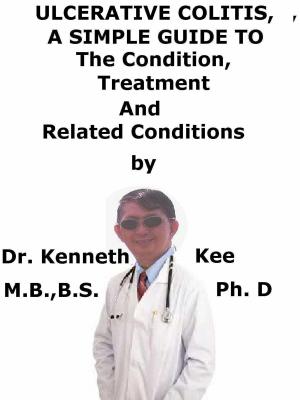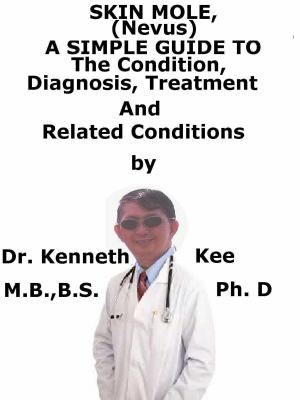Elephant Man Disease, (Proteus Syndrome) A Simple Guide To The Condition, Diagnosis, Treatment And Related Conditions
Nonfiction, Health & Well Being, Health, Ailments & Diseases, Genetic, Musculoskeletal| Author: | Kenneth Kee | ISBN: | 9780463376614 |
| Publisher: | Kenneth Kee | Publication: | July 9, 2018 |
| Imprint: | Smashwords Edition | Language: | English |
| Author: | Kenneth Kee |
| ISBN: | 9780463376614 |
| Publisher: | Kenneth Kee |
| Publication: | July 9, 2018 |
| Imprint: | Smashwords Edition |
| Language: | English |
This book describes Elephant Man Disease, Diagnosis and Treatment and Related Diseases
Elephant Man Disease is a rare disorder featured by overgrowth of different tissues of the body.
The cause of the disorder is a mosaic difference in a gene called AKT1.
Conflicting asymmetric overgrowth happens in a mosaic pattern (i.e., a random "patchy" pattern of affected and unaffected areas).
Affected persons may have a wide variety of complications that may be:
- Progressive skeletal malformations,
- Benign and malignant tumors,
- Malformations of blood vessels (vascular malformations),
- Bullous pulmonary disease, and
- Certain skin lesions.
In some patients, life-threatening disorders linked to abnormal blood clotting may form such as deep vein thrombosis and pulmonary embolism.
Causes
Proteus syndrome is produced by an alteration in a growth regulatory gene called AKT1 that happens after fertilization of the embryo
Affected patients have some cells with a normal copy of this regulatory gene and some cells with the abnormal gene (mosaic).
The inconsistency of symptoms linked with Proteus is because of the ratio of healthy cells to abnormal cells.
Symptoms
Proteus syndrome can affect bone and connective tissue, fatty tissues, skin, central nervous system and viscera (internal organs).
The specific symptoms and severity differs greatly from patient to patient.
In some patients, involved patients may show only a few, mild symptoms of Proteus syndrome, making diagnosis very hard.
Most affected patients are born without any noticeable symptoms.
Some patients may have brain overgrowth that is evident at birth.
Overgrowth normally begins between 6-18 months.
The specific affected areas of the body differ greatly from patient to patient.
Bone, connective tissue and fat are the most often affected tissues in the body.
Overgrowth linked with Proteus syndrome is not regular, not proportionate
It may involve one side of the body such as only one foot and not the other (asymmetric).
Overgrowth of bone (hyperostosis) may happen involving the skull, the long bones of the arms and legs, and the feet and hands.
Overgrowth in Proteus syndrome is normally severe and usually deforms bones to the point that they are not recognizable.
Patients with Proteus syndrome may be at danger for forming blood clots in the legs a disorder known as deep vein thrombosis (DVT).
The legs may become painful and enlarged and blood vessels in the legs may be visibly swollen.
In some, a piece of a DVT blood clot may break off and move up the bloodstream toward the lungs, where it may produce a pulmonary embolism. (PE)
Patients with these abnormalities may also have distinct facial features such as:
- A long face,
- Downward slanting eyelid folds (palpebral fissures),
- Droopy eyelids (ptosis),
- Low bridge of the nose,
- Wide nostrils (nares), and
- A long narrow head (dolichocephaly).
Diagnosis
Diagnosis of Proteus syndrome is made using medical diagnostic criteria and molecular testing.
The gene abnormality is not often present in the blood and therefore DNA diagnostic testing must normally be done on biopsies of affected tissues
Treatment
The treatment of Proteus is focused toward the specific symptoms that are obvious in each patient.
Multiple orthopedic procedures are normally required to try and control the rapid overgrowth linked with Proteus syndrome.
Surgery may be indispensable when overgrowth disrupts joint function or induces scoliosis or angular deformities.
Surgery to decrease overgrown tissues or body parts may be indicated.
When going through surgery, affected patients should be considered for prevention to avoid blood clots.
TABLE OF CONTENT
Introduction
Chapter 1 Elephant Man Disease
Chapter 2 Causes
Chapter 3 Symptoms
Chapter 4 Diagnosis
Chapter 5 Treatment
Chapter 6 Prognosis
Chapter 7 Neurofibromatosis
Chapter 8 Lipoma
Epilogue
This book describes Elephant Man Disease, Diagnosis and Treatment and Related Diseases
Elephant Man Disease is a rare disorder featured by overgrowth of different tissues of the body.
The cause of the disorder is a mosaic difference in a gene called AKT1.
Conflicting asymmetric overgrowth happens in a mosaic pattern (i.e., a random "patchy" pattern of affected and unaffected areas).
Affected persons may have a wide variety of complications that may be:
- Progressive skeletal malformations,
- Benign and malignant tumors,
- Malformations of blood vessels (vascular malformations),
- Bullous pulmonary disease, and
- Certain skin lesions.
In some patients, life-threatening disorders linked to abnormal blood clotting may form such as deep vein thrombosis and pulmonary embolism.
Causes
Proteus syndrome is produced by an alteration in a growth regulatory gene called AKT1 that happens after fertilization of the embryo
Affected patients have some cells with a normal copy of this regulatory gene and some cells with the abnormal gene (mosaic).
The inconsistency of symptoms linked with Proteus is because of the ratio of healthy cells to abnormal cells.
Symptoms
Proteus syndrome can affect bone and connective tissue, fatty tissues, skin, central nervous system and viscera (internal organs).
The specific symptoms and severity differs greatly from patient to patient.
In some patients, involved patients may show only a few, mild symptoms of Proteus syndrome, making diagnosis very hard.
Most affected patients are born without any noticeable symptoms.
Some patients may have brain overgrowth that is evident at birth.
Overgrowth normally begins between 6-18 months.
The specific affected areas of the body differ greatly from patient to patient.
Bone, connective tissue and fat are the most often affected tissues in the body.
Overgrowth linked with Proteus syndrome is not regular, not proportionate
It may involve one side of the body such as only one foot and not the other (asymmetric).
Overgrowth of bone (hyperostosis) may happen involving the skull, the long bones of the arms and legs, and the feet and hands.
Overgrowth in Proteus syndrome is normally severe and usually deforms bones to the point that they are not recognizable.
Patients with Proteus syndrome may be at danger for forming blood clots in the legs a disorder known as deep vein thrombosis (DVT).
The legs may become painful and enlarged and blood vessels in the legs may be visibly swollen.
In some, a piece of a DVT blood clot may break off and move up the bloodstream toward the lungs, where it may produce a pulmonary embolism. (PE)
Patients with these abnormalities may also have distinct facial features such as:
- A long face,
- Downward slanting eyelid folds (palpebral fissures),
- Droopy eyelids (ptosis),
- Low bridge of the nose,
- Wide nostrils (nares), and
- A long narrow head (dolichocephaly).
Diagnosis
Diagnosis of Proteus syndrome is made using medical diagnostic criteria and molecular testing.
The gene abnormality is not often present in the blood and therefore DNA diagnostic testing must normally be done on biopsies of affected tissues
Treatment
The treatment of Proteus is focused toward the specific symptoms that are obvious in each patient.
Multiple orthopedic procedures are normally required to try and control the rapid overgrowth linked with Proteus syndrome.
Surgery may be indispensable when overgrowth disrupts joint function or induces scoliosis or angular deformities.
Surgery to decrease overgrown tissues or body parts may be indicated.
When going through surgery, affected patients should be considered for prevention to avoid blood clots.
TABLE OF CONTENT
Introduction
Chapter 1 Elephant Man Disease
Chapter 2 Causes
Chapter 3 Symptoms
Chapter 4 Diagnosis
Chapter 5 Treatment
Chapter 6 Prognosis
Chapter 7 Neurofibromatosis
Chapter 8 Lipoma
Epilogue
